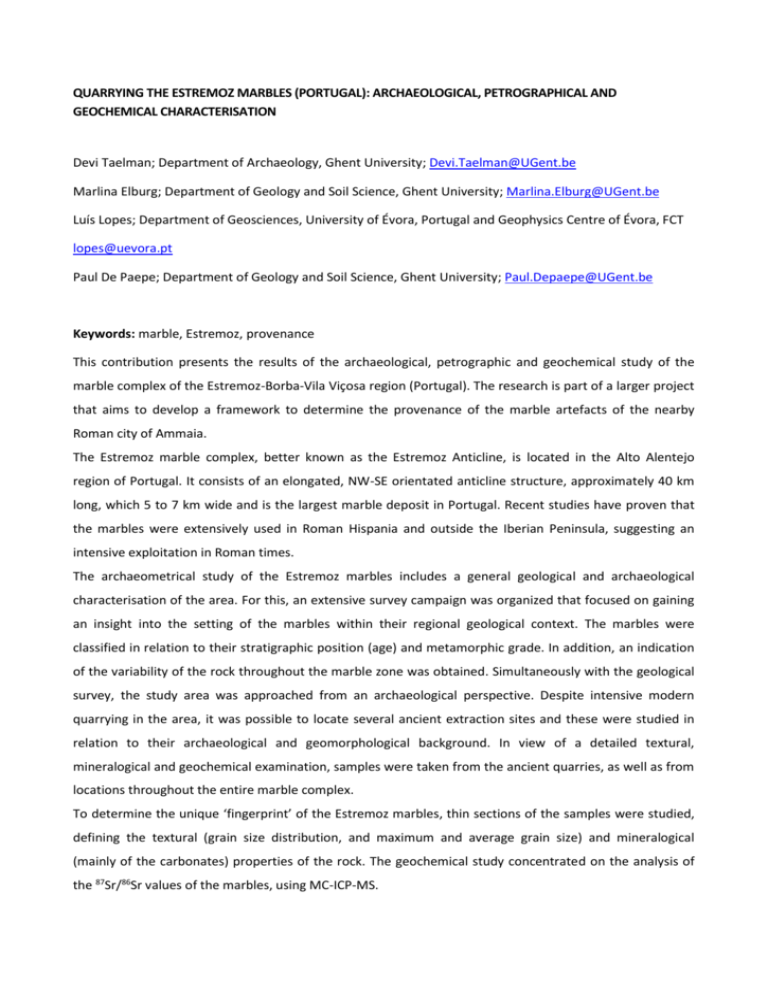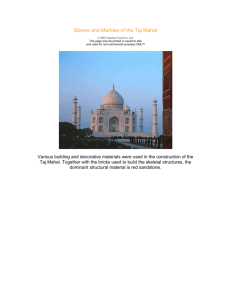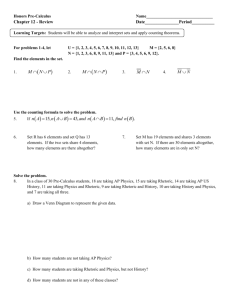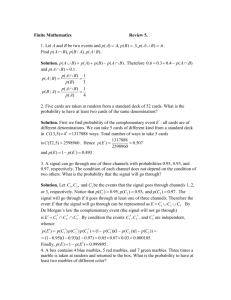2012_asmosiaX_estremoz
advertisement

QUARRYING THE ESTREMOZ MARBLES (PORTUGAL): ARCHAEOLOGICAL, PETROGRAPHICAL AND GEOCHEMICAL CHARACTERISATION Devi Taelman; Department of Archaeology, Ghent University; Devi.Taelman@UGent.be Marlina Elburg; Department of Geology and Soil Science, Ghent University; Marlina.Elburg@UGent.be Luís Lopes; Department of Geosciences, University of Évora, Portugal and Geophysics Centre of Évora, FCT lopes@uevora.pt Paul De Paepe; Department of Geology and Soil Science, Ghent University; Paul.Depaepe@UGent.be Keywords: marble, Estremoz, provenance This contribution presents the results of the archaeological, petrographic and geochemical study of the marble complex of the Estremoz-Borba-Vila Viçosa region (Portugal). The research is part of a larger project that aims to develop a framework to determine the provenance of the marble artefacts of the nearby Roman city of Ammaia. The Estremoz marble complex, better known as the Estremoz Anticline, is located in the Alto Alentejo region of Portugal. It consists of an elongated, NW-SE orientated anticline structure, approximately 40 km long, which 5 to 7 km wide and is the largest marble deposit in Portugal. Recent studies have proven that the marbles were extensively used in Roman Hispania and outside the Iberian Peninsula, suggesting an intensive exploitation in Roman times. The archaeometrical study of the Estremoz marbles includes a general geological and archaeological characterisation of the area. For this, an extensive survey campaign was organized that focused on gaining an insight into the setting of the marbles within their regional geological context. The marbles were classified in relation to their stratigraphic position (age) and metamorphic grade. In addition, an indication of the variability of the rock throughout the marble zone was obtained. Simultaneously with the geological survey, the study area was approached from an archaeological perspective. Despite intensive modern quarrying in the area, it was possible to locate several ancient extraction sites and these were studied in relation to their archaeological and geomorphological background. In view of a detailed textural, mineralogical and geochemical examination, samples were taken from the ancient quarries, as well as from locations throughout the entire marble complex. To determine the unique ‘fingerprint’ of the Estremoz marbles, thin sections of the samples were studied, defining the textural (grain size distribution, and maximum and average grain size) and mineralogical (mainly of the carbonates) properties of the rock. The geochemical study concentrated on the analysis of the 87Sr/86Sr values of the marbles, using MC-ICP-MS.











